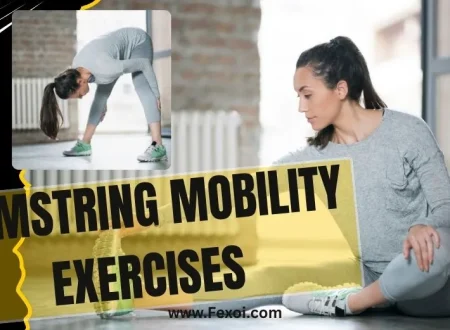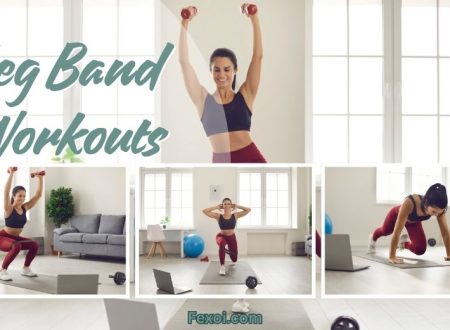Why Hand Weights Make a Difference
If you’re lifting without results, it’s likely not your effort—but rather your tools. Hand weights (dumbbells) offer unmatched versatility for building muscle through resistance training, progressive overload, and full range-of-motion movements. Unlike machines, they engage stabilizer muscles, increase control, and let you lift with proper eccentric control—a key driver of hypertrophy, especially for beginners Tom’s Guide.
With just a set of hand weights, you can perform hundreds of compound and isolation exercises at home, from bicep curls to lunges, overhead presses, and Turkish get-ups. The trick? Choose weight that challenges you within 6–12 reps, then consistently add weight or volume over time.
What to Look for in Muscle Building Dumbbells
1. Weight Range & Increment Strategy
Beginners benefit from smaller increments (2.5–5 lb) for smoother progress and reduced injury risk. Intermediate and advanced lifters need access to heavier loads (50–90 lb per hand) to support compound lifts like bench press and rows. Progressive overload requires a wide enough range to continuously challenge muscles as strength improves.
2. Adjustability vs Fixed Design
Adjustable sets save space and cost by combining multiple weights in one compact unit, ideal for home gyms or limited space. However, fixed dumbbells deliver a familiar feel, better balance, and faster weight transitions during high-intensity supersets or drop sets. Many pros prefer fixed designs for their durability and ease during fast-paced workouts.
3. Adjustment Mechanism
Dial or tab-based systems are efficient, allowing quick weight changes during circuits. However, ease and reliability vary by brand. Screw-on or twist handles may be slower but are often more secure. Important: avoid adjusting mid-rep—plate dislodgement risk is real with some recalled models, as noted by the U.S. The U.S. Consumer Product Safety Commission and New York Post have both reported on safety concerns related to certain adjustable dumbbells.
4. Durability & Safety
Material quality is crucial. Stainless steel, cast iron, or urethane-coated steel provide lasting durability and resist chipping, ensuring your dumbbells stay reliable through intense workouts. Avoid known recall models and cheap knock-offs often made with low-grade plastic, which may crack or warp over time. Investing in quality dumbbells means fewer injuries, better balance, and peace of mind during intense training.
5. Grip & Comfort
Knurled or textured grips improve control and reduce slippage during sweaty workouts. Neoprene handles offer comfort for low-weight movements or beginners, especially in cardio circuits. Thicker handles can better suit larger hands or advanced lifters looking to improve grip strength alongside muscular endurance. A secure, comfortable grip also reduces strain on wrists.
Top Hand Weight Options: Reviewed & Compared
Bowflex SelectTech 552 Adjustable Dumbbells
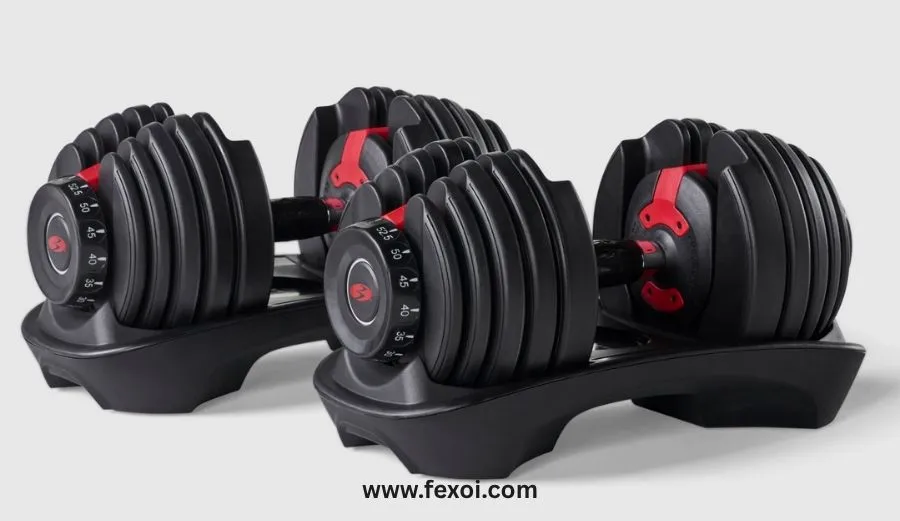
- Weight range: 5–52.5 lb per dumbbell
- Adjustment: Quick dial
- Pros: Smooth weight transitions, compact and space-saving, replaces up to 15 sets of traditional dumbbells. Ideal for small home gyms and beginner-to-intermediate strength training. Highly rated by Active Gear Reviews, Garage Gym Reviews, and SELF for its ease of use.
- Cons: Recently recalled due to safety hazards—over 3.8 million units affected. Reports include plates dislodging mid-use, causing injuries (111+ cases per U.S. Consumer Product Safety Commission, New York Post, The Sun). Also, some users on Reddit noted the dumbbells feel bulky during certain movements like curls or shoulder presses.
- Use it if: You want compact, beginner-friendly adjustable weights—but be sure to verify recall status or avoid entirely.
PowerBlock Elite Series Adjustable Dumbbells
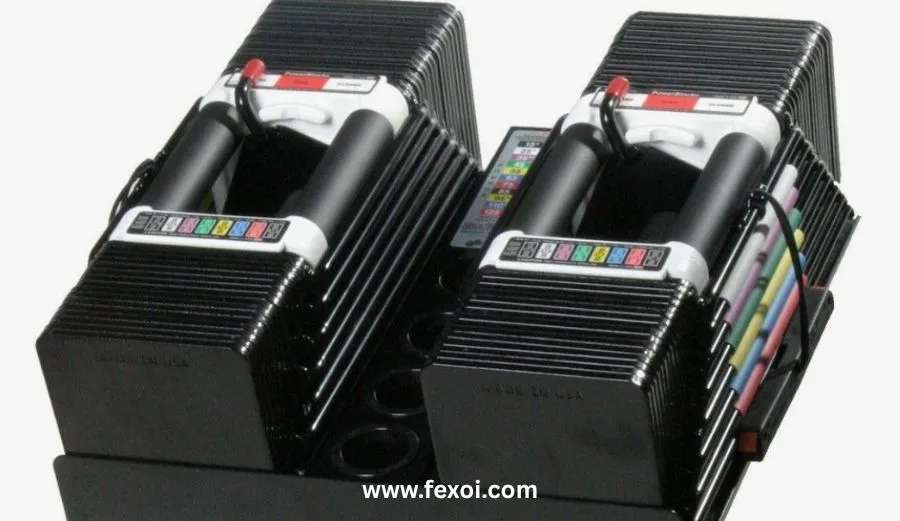
- Weight range: 5–70 lb (expandable to 90 lb)
- Adjustment: Sliding selector pin
- Pros: Known for durability and longevity. Features a compact block-shaped design (~16″ length) that keeps the center of mass close to your grip for better control. Loved by advanced users and professionals for its quick adjustment and space efficiency. Reviewed positively by LiveScience, Garage Gym Reviews, and multiple Reddit users.
- Cons: Rectangular design may feel awkward at first; some users find the cage-style handle less comfortable. Expansion kits to reach higher weights are sold separately.
- Use it if: You’re serious about lifting and need a durable, expandable system for long-term use.
Amazon Basics Neoprene Dumbbells (Fixed)
- Weight range: 1–20 lb (in small 1-lb increments)
- Type: Fixed pairs with neoprene-coated hex design
- Pros: Extremely budget-friendly, ideal for beginners, and easy to find. Features color-coding for quick weight recognition and a slip-resistant coating that holds up well even during sweaty workouts. Great for rehabilitation, aerobic workouts, and light strength training. Well-rated on OutdoorGearLab, TaekwondoKing, and other fitness sites.
- Cons: Weight range too limited for muscle hypertrophy or compound lifts. The handle size is small, which may not suit people with large hands. Not designed for intermediate or heavy training.
- Use it if: You’re just starting out, recovering from injury, or doing light toning and cardio-based routines.
Core Home Fitness Adjustable Dumbbells
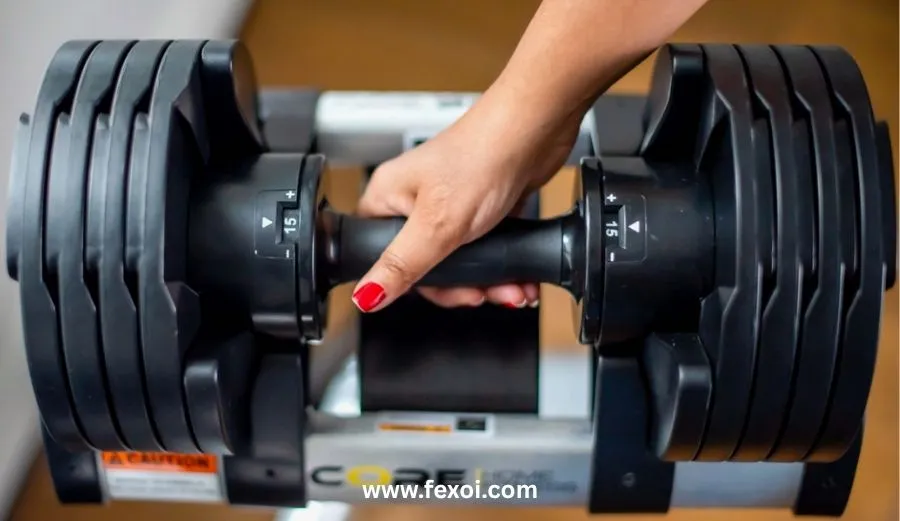
- Weight range: ~5–50 lb
- Adjustment: Twist handle with 5-lb increments
- Pros: Great value for the price, with a compact design that’s easy to store. The quick twist adjustment mechanism makes these dumbbells perfect for HIIT, circuit workouts, and everyday home use. They’ve been recognized by *Men’s Journal* and *Good Housekeeping* as top-performing and reliable choices.
- Cons: Maximum weight is lower than competitors. Some users report selector rods not seating properly at half-weight settings, raising safety flags. This has been discussed in-depth on Reddit, especially for fast-paced workouts.
- Use it if: You want affordable, versatile dumbbells for moderate workouts on a budget.
Ativafit Adjustable Dumbbells
- Weight range: 5.5–55 lb
- Adjustment: Dial with safety button
- Pros: Dependable mid-range choice with solid safety features. The smooth dial system and firm locking mechanism provide a secure, confident lifting experience. Highly rated by LiveScience and WeighEveryday for value and ease of use. Suitable for full-body routines and progressive overload.
- Cons: Dumbbells may rattle slightly; the overall shape is wider, which can interfere with close-range exercises like goblet squats or tricep extensions. Not ideal for quick transitions between movements.
- Use it if: You’re seeking a solid mid-tier adjustable set under $400 that covers most general fitness needs.
Flybird and LifePro PowerFlow Plus (Budget Adjustable Picks)
- Weight range: 5–25 or 5–55 lb (varies by model)
- Adjustment: Slider or twist-lock mechanism
- Pros: LifePro’s model is perfect for beginners and light strength training, earning Tom’s Guide Awards for its safety, intuitive design, and seamless performance. It’s an excellent starter option with a minimal learning curve and is also praised by LiveScience for its affordability.
- Cons: Limited weight range makes it unsuitable for serious lifters. Some models include plastic trays that may degrade or break over time. Not built for long-term heavy lifting.
- Use it if: You need an affordable, entry-level adjustable set for light to moderate use and occasional training.
Real‐User Perspectives (from Reddit)
PowerBlock Elite
- Many users commend its robust build quality and durability over time.
- One Redditor shared: “Been using the Elite USA model for 6–7 weeks—still looks practically brand new.”
- Adjustments feel secure and reliable even after intense sessions.
Bowflex 552
- Widely praised for its user-friendly operation and space-saving design.
- However, some users regret the purchase due to durability concerns.
- Several lifters prefer PowerBlocks for heavy workouts and long-term reliability.
Common Adjustable Dumbbell Complaints
- Plates may rattle or misalign if not seated correctly.
- Adjusting weights mid-rep is risky—can lead to accidental drops.
- Users recommend double-checking locks before starting any set.
Training Tips for Maximum Muscle Growth
1. Control & Range of Motion
Form always beats ego lifting. Concentrate on controlled movements—especially the eccentric (lowering) phase. Move slowly, extend through the full range, and keep a tight mind-muscle connection. That’s what stimulates hypertrophy early, even with lighter weights (Tom’s Guide).
2. Progressive Overload
To build strength and muscle over time, you must challenge your body weekly. Add 5–10% more weight or increase reps. If you’re capped by your current dumbbell set, focus on extra sets, slower tempo, or shorter rest intervals for similar gains.
3. Compound + Accessory Approach
Start sessions with big movements like dumbbell presses, rows, and goblet squats. Then move to isolated accessory exercises like lateral raises or triceps kickbacks. This combined training approach targets multiple muscle groups simultaneously and increases overall calorie expenditure.
4. Tempo Training
A great trick for breaking plateaus is adjusting tempo. Try 3-second lowers, hold at the bottom for 1–2 seconds, and lift in a smooth, controlled motion. Slowing things down increases time-under-tension and reduces injury risk.
5. Structured Routine Options
Dumbbells work with nearly any workout split—full-body three days a week, or upper/lower body splits four times weekly. Combine your dumbbell plan with progressive overload and proper rest for optimal muscle-building. While 5×5 routines are barbell-based, you can easily adapt them using dumbbells for compound moves and bodyweight work for volume.
6. Deload Weeks & Recovery
Don’t forget rest. Every 4–6 weeks, take a lighter week to prevent burnout and allow muscles to recover. Pair training with proper nutrition (especially protein intake) and sleep to fully benefit from your efforts.
Quick Comparison Summary Table
| Model | Range per Dumbbell | Adjust Mechanism | Ideal For | Notable Tradeoff |
| Bowflex SelectTech 552 | 5–52.5 lb | Dial | Beginner–Intermediate | Recalled—stop if owned; limited to 52 lb |
| PowerBlock Elite | 5–70 lb (up to 90 lb) | Selector Pin | Serious lifters | Boxy shape; slight learning curve |
| Core Home Fitness | ~5–50 lb | Twist Handle | Budget adjustable option | Limited weight; some safety reports |
| Ativafit | 5.5–55 lb | Dial + Safety Button | Mid-range lifters | Rattling plates; chunky design |
| LifePro / Flybird | ~5–25 lb | Slider/twist | Entry-level adjustable | Low max weight; plastic base |
| Amazon Neoprene | 1–20 lb | Fixed Pairs | Beginners / Rehab | Not heavy enough for hypertrophy |
Final Recommendations
New to strength training or light toning?
Choose fixed neoprene dumbbells (1–20 lb) for control, comfort, and clarity. Add weight gradually and focus on form and full range.
Want space-saving, scalable options?
PowerBlock Elite or Ativafit give you broad weight ranges in one compact set—PowerBlock is ideal for heavier training, while Ativafit offers a durable mid-range option.
On a tight budget and training light to moderate?
Core Home Fitness, LifePro, or Flybird adjustable sets serve well for entry-level to intermediate users.
Avoid or stop using:
Bowflex SelectTech 552 or 1090 models if you own one—due to a wide safety recall impacting ~3.8 million units sold between 2004 and May 2025. Contact for refunds or replacement option New York PostU.S. Consumer Product Safety Commissionthe-sun.com.
Conclusion
If you’ve hit a plateau, the right pair of hand weights can jumpstart your gains. Whether you opt for premium stretch like PowerBlock Elite, budget-friendly Core/Flybird/LifePro, or starter neoprene pairs, choose gear that allows proper progression, full motion, and control.
Build your routine around compound movements, integrate accessory lifts, and steadily increase resistance. With consistency and the right weights, you’ll see muscle development—not just in your arms, but across your whole body.
Let me know if you’d like structured workouts tailored to any of these options, or tips for balancing form, load, and progressive design!





